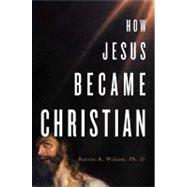
| Acknowledgments | p. ix |
| Prologue: A Personal Note | p. xi |
| The Cover-Up | p. 1 |
| Cultures in Conflict | p. 7 |
| Being Jewish in a Cosmopolitan World | p. 31 |
| The Secrets of History | p. 48 |
| The Challenge of Jesus | p. 63 |
| The Promises of Jesus | p. 85 |
| Jesus's Earliest Followers: The Jesus Movement | p. 95 |
| What Happened to Jesus? | p. 103 |
| The Trouble with Paul | p. 109 |
| The Big Switch: Christ for Jesus | p. 131 |
| The Jesus Movement Fades Away | p. 150 |
| Paul the Radical | p. 168 |
| Demonizing Jewish Leadership and the Jewish People | p. 182 |
| Confiscating Judaism's Heritage | p. 195 |
| Attacking the Jewish Concept of God | p. 211 |
| Anti-Semitism | p. 230 |
| The Cover-Up Revealed | p. 237 |
| Epilogue: The Way Forward | p. 254 |
| Timelines | p. 267 |
| Terminology | p. 275 |
| Notes | p. 285 |
| Bibliography | p. 300 |
| Index | p. 307 |
| Table of Contents provided by Ingram. All Rights Reserved. |
The New copy of this book will include any supplemental materials advertised. Please check the title of the book to determine if it should include any access cards, study guides, lab manuals, CDs, etc.
The Used, Rental and eBook copies of this book are not guaranteed to include any supplemental materials. Typically, only the book itself is included. This is true even if the title states it includes any access cards, study guides, lab manuals, CDs, etc.
Excerpted from How Jesus Became Christian by Barrie Wilson
All rights reserved by the original copyright owners. Excerpts are provided for display purposes only and may not be reproduced, reprinted or distributed without the written permission of the publisher.